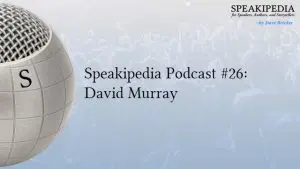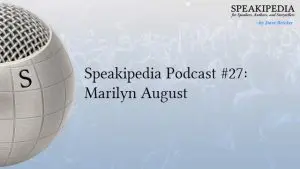 As a graphic designer, I see numerous parallels between the values that create engaging imagery and the values that create engaging prose. So many designs fail because the designer arranged elements on a page without questioning their purpose, hierarchy, or relationship to the intended message. Good writing is characterized by the same conscious application of order, balance, tension, tone, spirit, relevance, and clarity as good design. As a designer might scrutinize a page to evaluate margins, kerning, and font choice, a writer can search for style patterns that illuminate weak, lazy, or formulaic writing and missed opportunities to create stronger prose.
As a graphic designer, I see numerous parallels between the values that create engaging imagery and the values that create engaging prose. So many designs fail because the designer arranged elements on a page without questioning their purpose, hierarchy, or relationship to the intended message. Good writing is characterized by the same conscious application of order, balance, tension, tone, spirit, relevance, and clarity as good design. As a designer might scrutinize a page to evaluate margins, kerning, and font choice, a writer can search for style patterns that illuminate weak, lazy, or formulaic writing and missed opportunities to create stronger prose.
This article is the first in a series of “Writing is Design” tips. The advice offered concerns writing patterns that can be easily searched electronically within a manuscript. And such style problems are unlikely to be revealed by spelling and grammar checkers. You’ll need to ferret them out yourself or use a style checker like AutoCrit.
Pronouns
You can find the 25 most common pronouns here, but rather than create yet another rant about the subject, this post focuses on “we,” they,” “there,” and “it.”
Pronouns at the start of a sentence run the risk of being vague:
It felt cold and heavy in his hand.
But in context, the same initial pronoun can avoid repetition and smooth out the prose. In this second example, the reader has no doubt about what “it” is.
Tom withdrew the revolver from his coat pocket. It felt cold and heavy in his hand.
And yet, we might look for an opportunity to substitute a detail or a synonym or a pinch of pepper for the pronoun. Can we insert a phrase that builds tension or supports a thread of the plot?
Tom withdrew the revolver from his coat pocket. The weapon felt cold and heavy in his hand.
Tom withdrew the revolver from his coat pocket. His father’s gun felt cold and heavy in his hand.
Tom withdrew the revolver from his coat pocket. The deadly instrument felt cold and heavy in his hand.
Certainly, use of the simple pronoun “it” is not wrong, and electing to use [it] is a perfectly valid writing choice. But when designing prose, search out each instance of “we,” they,” “there,” and “it.” Make a conscious decision about whether you want to use a pronoun or substitute some spice.
Pronouns have an unfortunate affinity for “generic” verbs:
We were on top of the mountain.
He was a sailor with a sparkling blue uniform.
They are delicious
There are two flavors of ice cream in the freezer.
Verbs like “was,” “are,” and “is” reh5sent the most generic statements a writer can make about the status of a subject. If verbs like these were single, they’d advertise that they “like candle-lit dinners and walks on the beach.” They perform a functional role in a sentence by fulfilling the (loose) requirement that it contain a verb, but that’s about all they do apart from asserting existence and tense. When combined with a pronoun, generic verbs complete a perfect recipe for boring writing.
“There are” and “There is” are particularly troublesome combinations. “There”—in some nonspecific state or condition; “is/are”—exists in some nonspecific way. For an easy fix, look for opportunities to put the subject up front:
Two flavors of ice cream are available in the freezer.
or in back:
The freezer contains two flavors of ice-cream.
And now, we can use some playful verbs to characterize the freezer:
The freezer produced two flavors of ice cream.
The freezer conceals two flavors of ice cream.
Let’s upgrade the rest of our verbs. Add an action, some conviction , some sensory input. Make the sentence more experiential.
We planted our flag on top of the mountain.
He stood proudly at the rail, a sailor with a sparkling blue uniform.
They taste delicious.
Replacing the pronouns works as in the first example. Identify who or what is being reh5sented and add details that enhance description or experience.
My trio of exhausted climbers planted our flag on top of the mountain.
Midshipman Thomas stood proudly at the rail, a sailor with a sparkling blue uniform.
Sarah’s homemade chocolates taste delicious.
Certainly, good writing does not require every instance of a pronoun combined with a generic verb to be “fixed.” Sometimes, the pronoun and generic verb combination fulfill the simple role of converting a potent phrase into a sentence.
It was a dark and stormy night.
In Edward Bulwer-Lytton’s classic example, the only reason the pronoun and generic verb exist at all is because “dark and stormy night” wouldn’t be a proper sentence without them. Nevertheless, I would be tempted to open with, “A dark and stormy night.” and let the stalwart grammarians hang.
Steven Bauer says, “I wouldn’t call the verbs “generic”; they’re all forms of “to be” (or what we used to call “verbs of being”) and they are more or less like equal signs in math. When they simply indicate descriptive conditions, they’re invaluable, but they quickly get boring simply because they denote stasis. In writing (in general, but particularly in narrative writing) doing trumps being. But part of the “design process” is having the taste to know when it’s inadvisable to translate the “is” construction into something “better,” which can also quickly become overwrought or fancy. As the great Elmore Leonard said, ‘If it sounds like writing, I rewrite it.'”
Use your word processor’s “Find” function to track down common pronouns and “generic” verbs in your manuscript. If the process of inspecting every “it” or looking at every sentence in your manuscript that begins with “There” is laborious, you’ve probably overused these pronouns and will find the effort to be worthwhile. Evaluate whether the pronoun or the generic verb is simple and elegant, or a wasted opportunity to write something better. Whether creating images or prose, that conscious, aesthetic decision-making process is called “design.”
Articles in the Writing is Design Series include:
Writing is Design: Avoid Bland Pronouns and Boring Verbs
Writing is Design: Avoid Writing Clichés for Better Prose
Writing is Design: Two-Word Writing Clichés
Writing is Design: Boring Words & Generic Descriptions — Not Nice!
Writing is Design – Writing Dialogue: He Said. She Said.
Writing is Design: Eliminate THAT Fat From Your Writing
Writing is Design: Shy Away from Timid and Passive Writing





